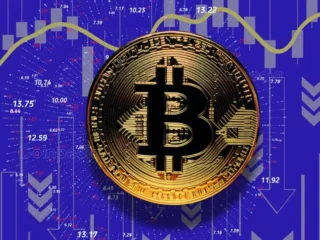
- XRP offers fast, neutral billing that can help world trade to reduce dependence on the dollar in international payments.
- Sanctioned and alliance-free states have an eye on the XRP blockchain to avoid the dollar-based systems in view of the increasing geopolitical tensions.
Since the regional trading dynamics under the pressure of geopolitical tensions, increasing tariffs and a growing urge to change according to monetary policy independence, some economic blocks are looking for alternatives to dependency on the US dollar. One of the technologies taken in Ripple, a digital asset that was developed for fast and scalable cross -border payments is one of the technologies. Although XRP was originally developed for institutional liquidity, it is increasingly being discussed as a mechanism that could help nations reduce its dependence on the dollar in international trade.
The discussion In the course of the aggressive US trade policy and the growing concern of sanctions, the “dedollarization” has gained dynamics. Countries within the Brics, Asean and other regional groups have started to experiment with non-dollar billing. Although no digital asset currently competes with the dominance of the dollar, the infrastructure of XRP offers certain characteristics that make it interesting in this context.
Neutral international resolution level
The core of the value promise of XRP is speed. In contrast to conventional cross-border payment systems that can take several days and in which several agents are involved, XRP enables almost immediate transactions between different Fiat currencies. This ability could reduce the use of the dollar because it enables direct processing between two currencies without a USD bridge.
Ripplenet, the network that supports XRP transactions, is already working with financial institutions all over the world. Due to the lower dependence on correspondence banks and the loss of the need to keep large quantities of pre-financed dollars on nostro accounts, XRP offers a more efficient way to facilitate trade handling. This could enable countries to process transactions via XRP instead of first converting local currencies to dollars.
Commercial blocks that are looking for alternatives to the dollar could possibly be used for blockchain-based assets such as XRP. For example, the BRICS countries have proposed to create a new currency system in order to reduce the dependence on the US financial infrastructure. Similarly, the ASEAN members have recorded discussions about billing in local currency in order to avoid trading on a dollar-based trade.
In this frame, XRP can serve as a technical level for multilateral billing. Its programmability, scalability and global accessibility could make it possible to act as a neutral exchange. Although these blocks do not officially agree, its design corresponds to some of the core principles discussed, such as reducing the exchange rate risk and avoiding the volatility associated with USD fluctuations.
Sanctioned states work on parallel infrastructure
XRP is also examined in discussions with countries that are under US sanctions. These countries have only limited access to traditional financial systems and are looking for opportunities to maintain trade with others than the dollar. While the use of digital assets to circumvent sanctions raises legal and ethical questions, the interest in decentralized payment distances remains.
XRP, which runs on an approval-free blockchain, could be hypothetically used by these nations to handle transactions with willing partners outside the US banking system. Such a step would require the participation of block -free countries and a careful approach to avoid violations of international law.





No Comments